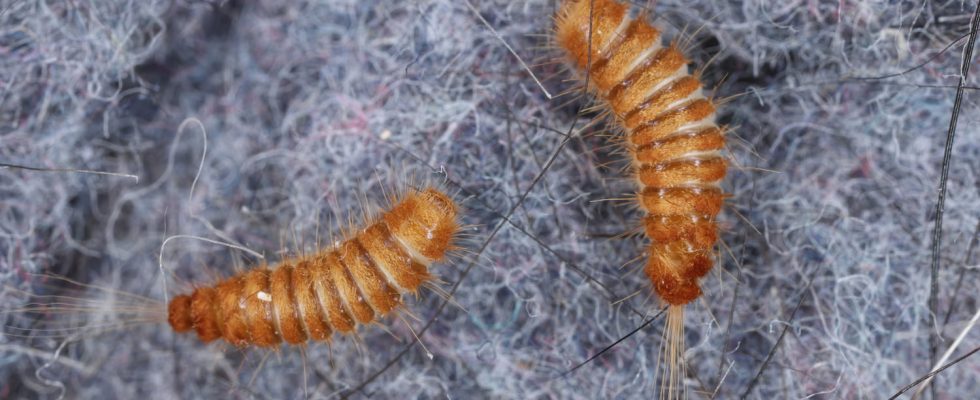Less known than the moth, the carpet beetle can cause major damage in homes! This effective method will allow you to eliminate them permanently.
In the category of annoying little creatures, moths have long been considered the sworn enemy of closets and clothing cabinets. However, another threat, often overlooked but just as destructive, lurks in the shadows: the carpet beetle, a seemingly harmless little critter that can cause considerable damage to your textiles. If you’ve noticed holes in your sweaters, but you don’t see any moths, this little creature is certainly living in your home.
The difference between these two beasts: beetles do not fear light, and in addition to devouring your textiles, they attack wood. Tall dry organic substances nourish them. The beetle is distinguished by its oval shape and its colors varying from brown to black, with distinct patterns on its back. But it is in the larva stage (which can last two years) that it causes damage.

To know if you are infested, there are several signs:
- Holes in your clothes, carpets, curtains, etc.
- The old molts of the larvae (also called exuviae).
- Beetle larvae with an elongated shape, brown/beige in color, with a hairy body.
- Presence of adult beetles.
What to do ? The method is identical to that used to eliminate moths. Start by regularly inspecting your cupboards, cabinets and drawers to spot the nest or any signs of a carpet beetle infestation. Then carry out a deep cleaning of your storage spaces, carefully vacuuming rugs, carpets and upholstered furniture to remove carpet beetle eggs and larvae. You will also need to carefully clean your cupboards and drawers, and wash all the textiles that were there. Beetles do not survive either heat or extreme cold. In the event of an infestation, put your textiles in the washing machine at 60 degrees, or put them in the freezer for at least 72 hours in an airtight plastic bag to kill the eggs and larvae.
You must then use natural repellents such as lavender, cloves or even cedar, to dissuade the little creatures from returning. As a last resort, In the event of a serious infestation, you can resort to chemical treatments such as aerosols or insecticides specifically designed to eliminate anthrene. Be sure to follow the manufacturer’s instructions carefully and take necessary precautions when using these products.
